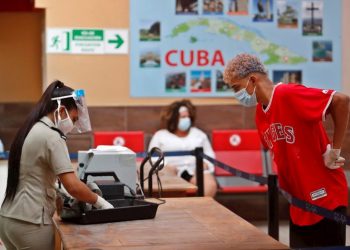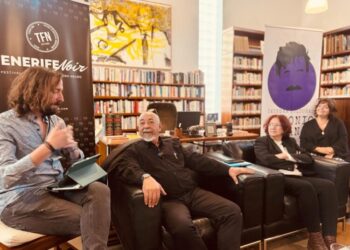These days, Yara movie theater premieres the documentary Copa y Espada, produced by the Cuban Institute of Cinematographic Art and Industry (ICAIC) and directed by Lourdes de los Santos. The audiovisual story broaches the theme of the religious syncretism existing between Santa Bárbara, Catholic patroness of the Spanish shipyards, and Shangó, deity of the Cuban Yoruba religion, and her deep roots in popular culture, particularly during the celebrations on December 2, 3 and 4 that take place in the municipality of Güines, province of Mayabeque, since 1860.
In a simple and profound narrative, the film presents testimonies by ethnologists Natalia Bolívar and Miguel Barnet, by the topmost custodians of the virgin’s image in the chapel of the foundational neighborhood of Leguina, in Güines, and by other personalities of Cuban culture, like musician Adalberto Álvarez. Copa y Espada reflects the faith or devotion of a large part of the people for the Catholic deity and orisha of the African Cuban religion. The deep sound of the African forest, replied by the drums of the Danza a Shangó, captures the attention of the saint’s followers and of the lovers of the national past.
However, once the documentary is over, a question might arise: what is the origin of the first Cuban Santa Bárbara? To find the most correct version was enough reason to request the help of the learned Natalia Bolívar, who, without giving it a second thought, handed me the bibliography required to look up this piece of information of the religious Antillean anthropology.
As discovered by Cuban historian Leví Marrero in one of the documents existing in the Archive of the Indies of Seville, Spain, the foundational document of the first criollo banner made by artisans living in the Island dates from the 16th century.
Although carved and painted virgins coming from Europe had existed long before, the image of the first Cuban Santa Bárbara was built on October 15, 1599, according to the reference quoted by Marrero in one of the texts of his authorship, compiled in the book Escrito ayer. Papeles cubanos (Ediciones Capiro. Puerto Rico).
The image was carved in wood from our fields by Juan de Bruselas and Francisco de Ballester, two artisans from the Island, who received 500 reales for it. The order to build it “must have come from the distinguished Francisco Sánchez de Moya, captain of artillery of the King and commissioned to found the artillery factory and reactivate the copper mines”, as referred by the historian.
When he arrived at the mines, Sánchez de Moya, who became governor of Santiago de Cuba the following century, also had the first church built, which was to be the forerunner of the national sanctuary. According to the reference quoted by Marrero, “a church was built like the ones used in this land, with guano roof, and five arrobas (1 arroba=25 lbs) of copper were extracted to make a bell that was placed in it for the service and to call to work”.
The destination of the image of the virgin was the temple built for the labor force of the artillery factory established in the region. The first Santa Bárbara made in Cuba was thus embodied and became part of the national history.










